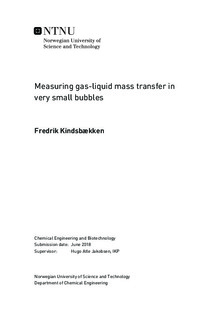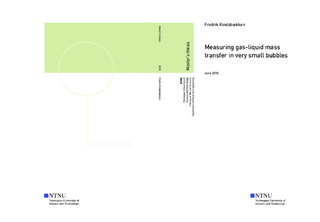| dc.description.abstract | Modern industry is always striving for process optimization and reducing emissions, which in many cases requires an accurate modeling of interfacial gas-liquid mass transfer. To study the interfacial gas-liquid mass transfer in very small gas bubbles, a working rig has been prepared to capture high resolution images of rising gas bubbles with diameters less than 2 mm.This report gives a basic presentation of theories from literature on the formation of very small bubbles, their departure from the tip of a needle and their rise velocity through the column. Subsequently the equipment used in experiments and how to use them both manually and through the controlling software LabVIEW is explained in detail. Analysis on the results from bubble production tests and attempts to follow the produced bubbles with a camera, concludes that the current setup is only capable of following bubbles up to a diameter of 0.9 mm. A new camera lift with twice the maximum velocity hasbeen ordered, which should be more than fast enough to follow bubbles with diametersup to 2 mm. The smallest achievable bubble size with the current setup is an equivalent diameter of ∼0.6 mm, assuming the bubbles are perfect spheres. Suggestions on how to reduce the minimum bubble size are given and initiated, but have not been tested due to a lack of time. | |

